“Hairy chested” is a trope often used to describe British sports cars of the postwar period. For some, it was appropriate, as anyone who has driven an Austin-Healey 3000 will tell you, because you need some pecs to deal with the steering. Over at the Rootes Group, however, its designers took a less hair shirt approach to the new Sunbeam Alpine introduced in 1959.
Not to be confused with the altogether different Alpine Mk I and Mk III of 1953–55, the Alpine Series I arrived with sleek looks that were far more modern than those of the contemporary Triumph TR3A. It also offered more creature comforts than the MGA – wind-up windows in place of sidescreens, for instance – so the Sunbeam had everything required for broad appeal to sports car buyers. The only problem was sports car buyers were a hardy bunch wherever they were, whether in the UK, the US, or elsewhere. It didn’t help the Alpine’s cause that it looked more like a tourer than a two-seat sports car, and even came with nominal 2+2 seating in most versions. When the Triumph TR4 and then the MGB roadster pitched up, the Alpine kidn of got squeezed from many buyers’ minds, even if it did rack up similar sales to the TR4/4A in total.

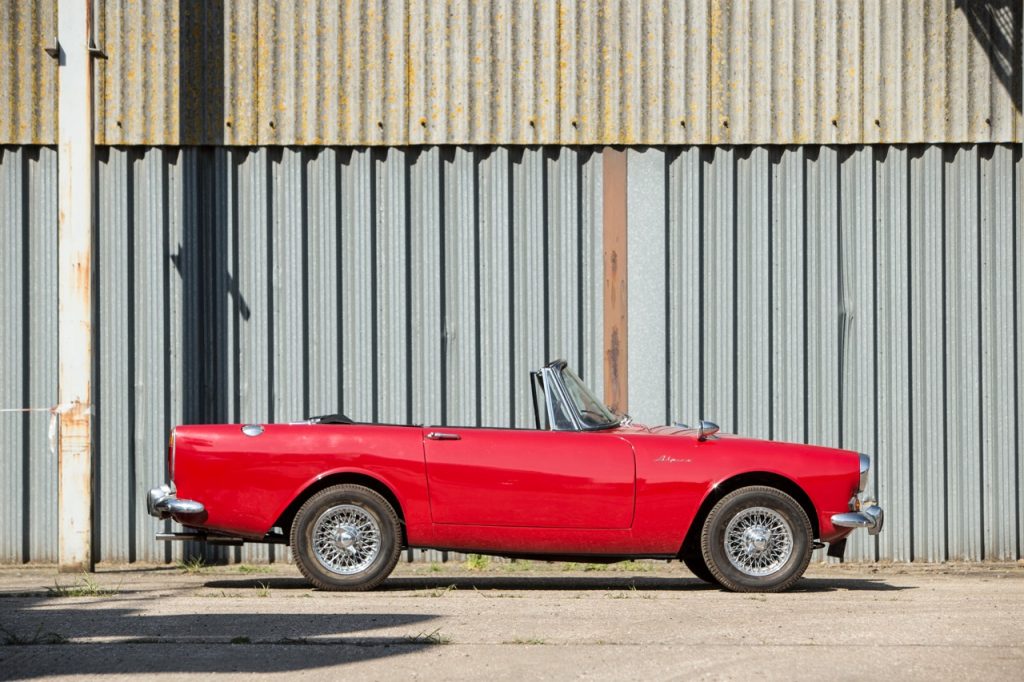
The Alpine Series I didn’t wow with its 78bhp 1.5-litre inline four-cylinder engine, which delivered 0–60mph in 14 seconds and would just wheeze the Sunbeam past 100mph. Little wonder it was replaced quickly in 1960 with an 80bhp 1.6-litre motor for the Series II. And yet, performance took a dip, with 0–60mph now coming in 14.8 seconds en route to a 97mph top speed. Fuel economy suffered as well. That counterintuitive trajectory continued with the Series III (1963) and IV (1964) – more power but reduced performance. It was only when the Series V arrived in 1965 with a 1725cc engine and 92bhp that things finally perked up. This final version would just hit 100mph, but at least dipped the 0–60mph time below 14 seconds, though not by much.
The Rootes Group famously addressed this problem with the Tiger, which was an Alpine with the V8 engine from a Ford Mustang under the bonnet. It’s one of the most underrated sports cars of its era, but it’s also beyond the scope of this buying guide. For the Alpine, GT and Sport models were offered from the Series III onwards, but performance was identical. The big difference was the GT came with a hard-top, but it also did without a fabric top for when you removed the roof.



Rootes came up with a coupe version of its Sunbeam sports car long before MG offered the B GT. Again, Sunbeam should have done well, but the Harrington Alpine was only an officially approved conversion and not a factory car. As a consequence, fewer than 400 of these pretty hard tops were made.
With the exception of the Harrington Alpine, which is eminently collectable and desirable thanks to its rarity, the Sunbeam Alpine remains an affordable, practical 1960s sports car. It’s easy to pass it by while browsing the likes of the MGB, Triumph TR4, Alfa Romeo Spider, and Fiat 124 Spider, but take a closer look and the Alpine’s broader charms make it an easy classic to live with – if you buy the right one.
What’s a Sunbeam Alpine Like to Drive?

Read through the Sunbeam Alpine’s mechanical specification and you’d be forgiven for thinking you were in for a dull drive. After all, the Alpine is based on the same floor pan as the Rootes Group’s lower order saloons of the same time. The engine is a not especially sporting four-pot, and the steering is by recirculating ball rather than rack-and-pinion. There is independent front suspension by double wishbones, while at the back are leaf springs and a live axle – pretty standard fare for the period.
On the road, the suspension misses the incisiveness of a Triumph or MG as you turn into corners. There’s more body lean in the Alpine and you feel less tucked into its cabin due to those tourer looks. All of this could be a disappointment, but it’s worth recalibrating your expectations to enjoy the Alpine for what it is – a sporty car rather than a sports car.
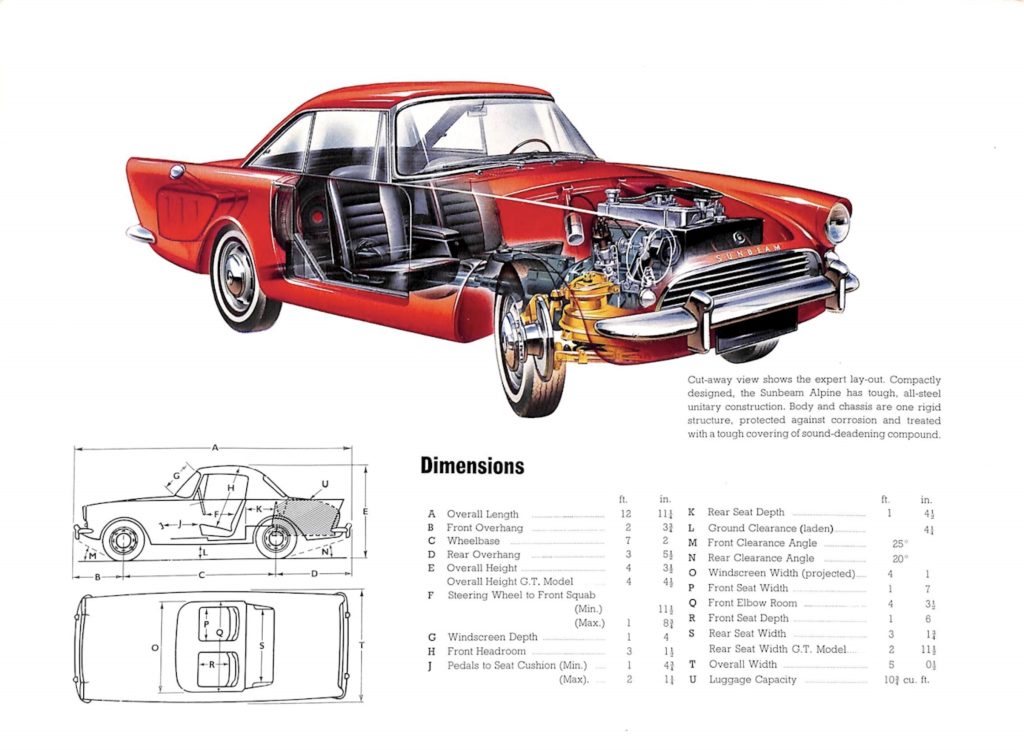
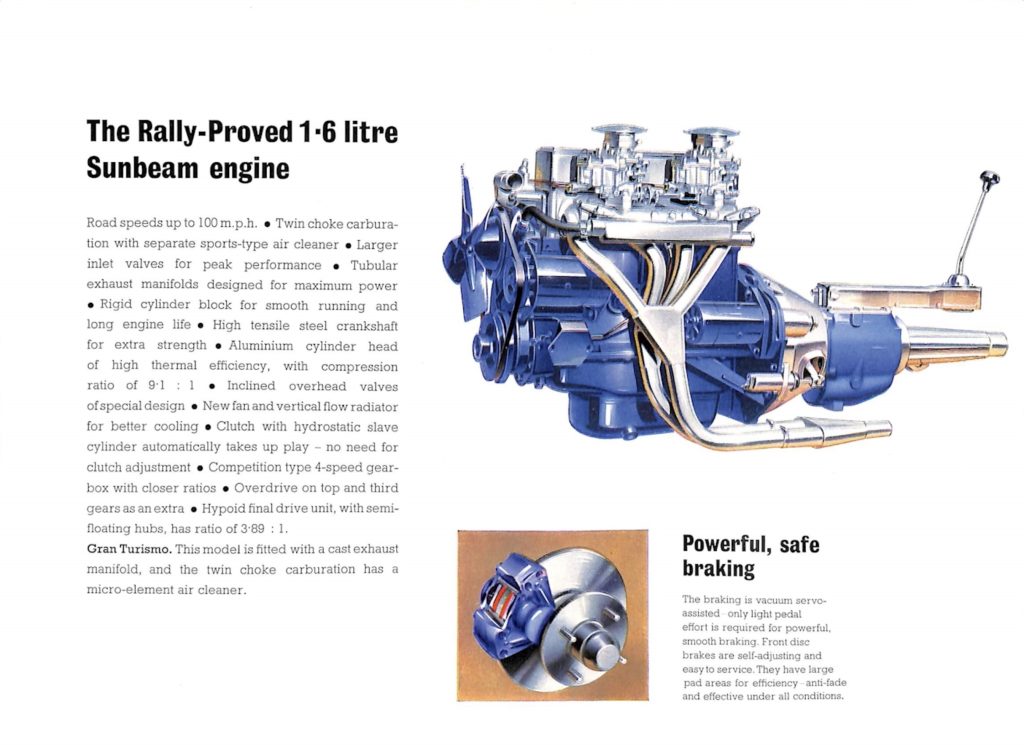
The steering that’s not as pitch perfect as an MGB’s also means the Sunbeam is a relaxing car to cover miles in, and it’s still more than accurate enough for country-road jaunts. It’s the same with the gearshift, the brakes, the throttle response, and the handling overall – they can all play a sporty role when asked, but they’re happier when cruising.
A more laid-back nature also shows itself in the roomier cockpit of the Alpine compared to its key rivals. Driver and passenger sit a bit more upright and there’s good room for elbows and shoulders. You’ll also find some room behind the seats for a couple of bags that might not fit into the generous boot. However, forget any notion of the Alpine being a 2+2 even if there are rear seats in there – not even small children will fit.
As an open-top car, the Sunbeam Alpine is more of a rival to the likes of the Triumph Vitesse convertible, Peugeot 204 cabriolet, or Renault Floride. In this company, it’s a very successful design that brings modern comforts with a big dash of style.
How Much Does a Sunbeam Alpine Cost?
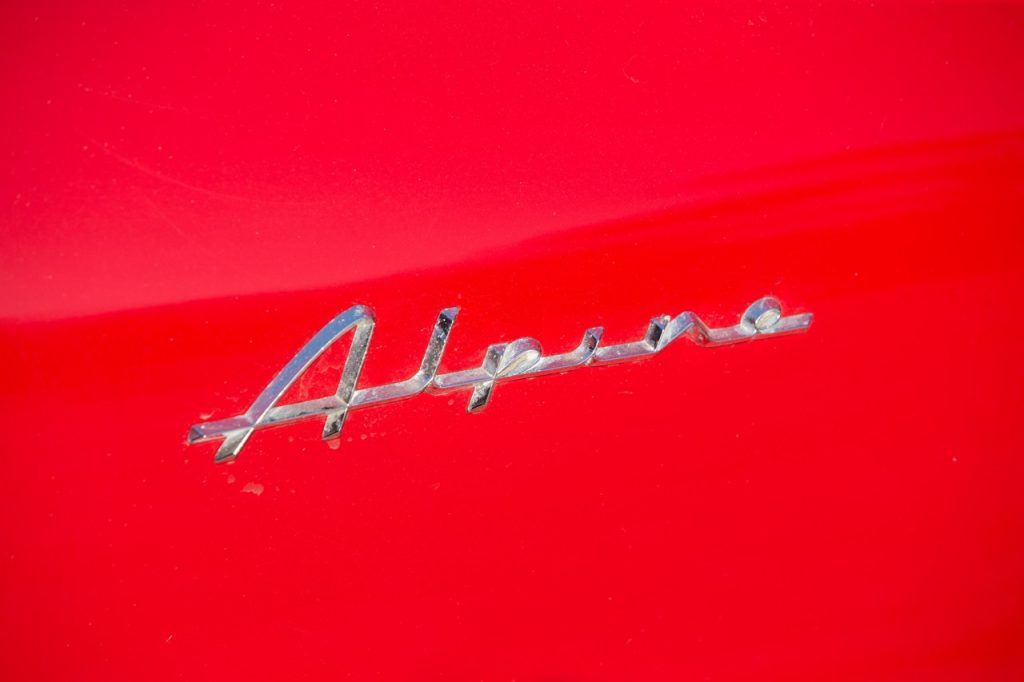
The spread of Sunbeam Alpine models are all within close reach of each other when it comes to prices. Despite being the least numerous of the Series Alpines, the Series I can be bought in reasonable running order from £8000. Double that budget and you’ll be driving a very smart example, while a show winner will cost about £21,000. Prices are much the same for the Series II car.
Look for a Series III and decent to good examples cost similar money to the SI and SII cars, but the very best edge a little closer to £25,000. A Series IV car is again on a par with the rest of the range, while a mint Series V can push up to £27,500. The red car seen here, a 1967 Series V, was sold by Bonhams in 2018 for £12,075. Values have since come up, but not by much.
The exception for Alpine valuation is the rare Harrington fastback model, where a sound car will command £14,000 and double that for one in fine all-round shape. The very best will be priced around £37,000. Find a Le Mans version and you can add a further £4000 to the price tag.
What to Look for When Buying a Sunbeam Alpine
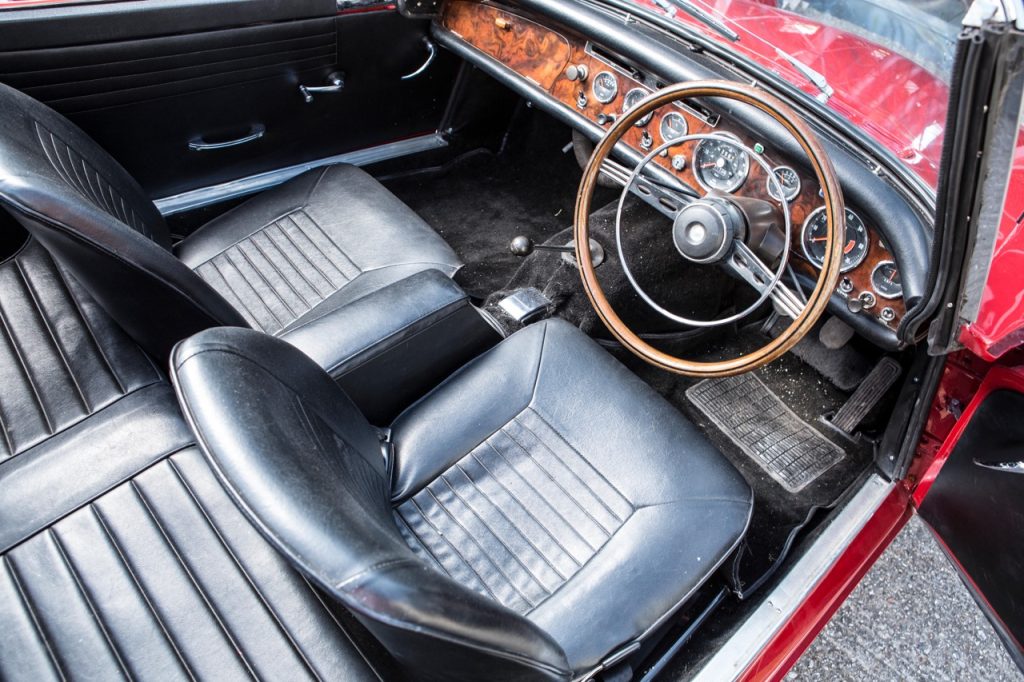
It will come as little surprise to learn that any pre-purchase inspection of a Sunbeam Alpine begins with a thorough search for rust. Even apparently shiny cars can hide serious structural corrosion, so be wary of any seller who won’t let you jack up the car. With the car on the jack, test the doors to see if they open and close easily. If they do, there’s a good chance the main cruciform chassis and sills are sound. Even so, you still need to get under the car and check every inch of the metalwork for rot. Rear spring hangers and the boot floor are common areas for rust, along with the front and rear valances, floor pans, and all around the bulkheads.
When you’ve finished underneath, it’s time to look at the inner wings, around the headlamps, wheelarches, boot lid, door bottoms, door hinges, windscreen surround, and pretty much every other piece of metal. Also check the hardtop’s condition if the car has one – later hardtops were made from steel rather than aluminium so are more likely to corrode.
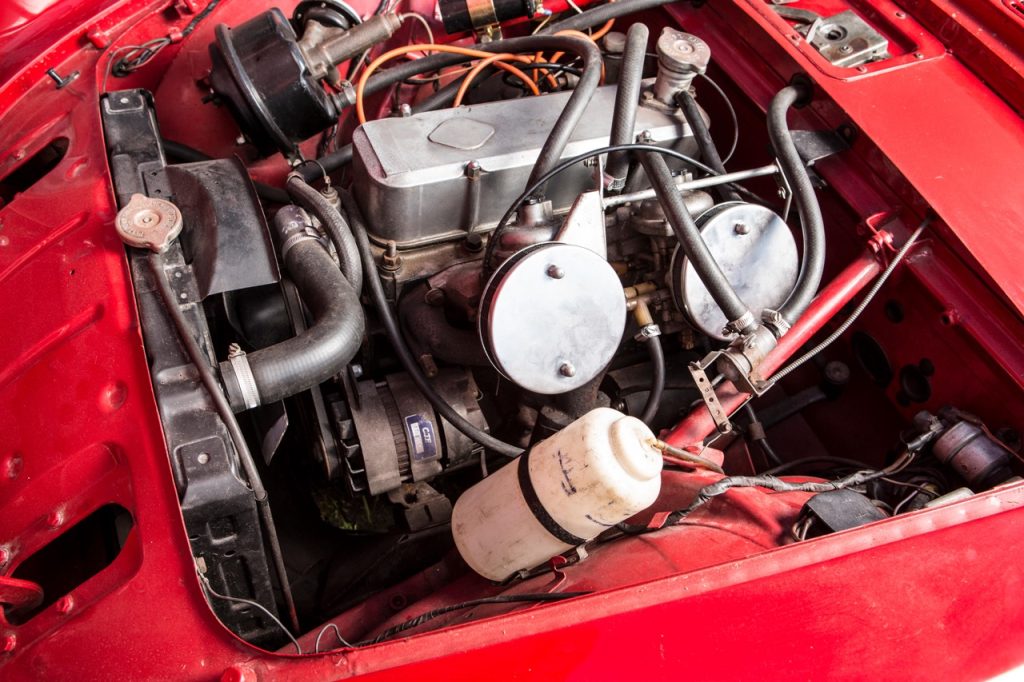
If all that sounds off-putting, the Sunbeam Alpine makes up for it with rugged mechanical components. The engines will generally soldier on, but look for blue smoke on start-up that points to worn bores or piston rings. Also make sure the engine gets up to temperature on a test drive and it doesn’t overheat or leak. Coolant dripping from the rear of the block points to a rusty core plug. Manual gearboxes are tough, while the overdrive, if fitted, is a Laycock de Normanville item and simple enough to overhaul. The three-speed automatic gearbox should work smoothly, but check for clean fluid.
The suspension, brakes, and steering are all tried and tested stuff from the Rootes Group parts bin of the late 1950s and early ’60s, so parts supply is decent. It’s also easy to work on and check for wear, so look for worn rubbers, leaking lever arm shock absorbers, and any play in the steering. Front disc brakes are also simple to inspect, and make sure the handbrake holds the car on a hill.
Inside, the Alpine Series III GT introduced a wood veneer dash, so check the condition of the panel if this is fitted, as the veneer can chip and lift. Make sure all of the dials and switches work properly and the window winders operate smoothly. On convertible cars, lift the top to check its fit and condition. New soft tops are available from around £300 in vinyl plus the cost of fitting if you don’t fancy doing it yourself.
Which Is the Right Sunbeam Alpine for You?
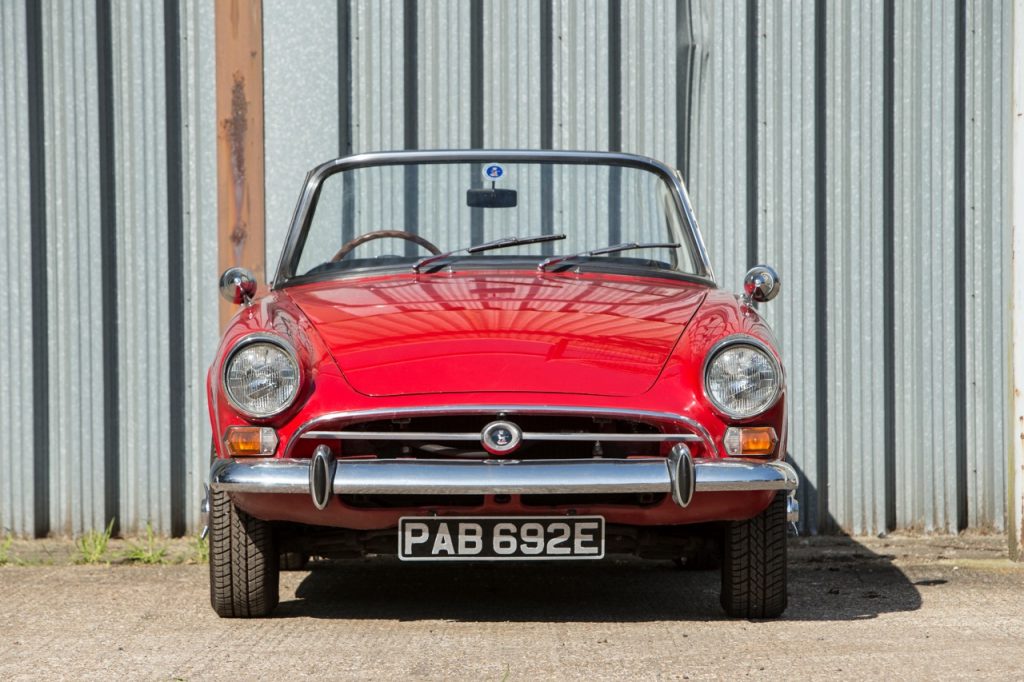
The key decision for many when choosing a Sunbeam Alpine is down to whether they prefer the larger rear fin style of the earlier cars or the slimmed down appearance of the later models. Series I–III cars made between 1959 and 1964 have the more pronounced rear fins. The SII gained the larger 1.6-litre engine, while the Series III came with servo-assisted brakes, quarter lights in the front doors, and slightly revised suspension. However, they all drive in a similar manner, albeit with leisurely performance.
For that reason, we’d look to the Series V that has the same rear end style as the Series IV but the larger and more flexible 1725cc engine. Find one with overdrive fitted, and it makes for a refined cruiser with decent fuel economy and just enough pep to stay with modern traffic. These last-of-the-line models also came with an alternator as standard rather than a dynamo for more effective lighting.









